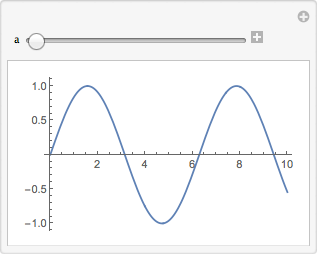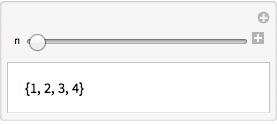Interactive Interfaces

You can take any expression and "manipulate" it with controls that change values of variables:

Notes for Java programmers:
The Manipulate command greatly simplifies GUI creation, automatically inferring control types and layout based on parameter specifications. Interface creation in Java requires the use of Swing, AWT or a third-party GUI library, typically with many more lines of code.
Notes for Python programmers:
Manipulate in the Wolfram Language greatly simplifies GUI creation, automatically inferring control types and layout based on parameter specifications, and runs seamlessly on desktop, cloud and mobile devices using the exact same code. In Python, building interactive interfaces requires custom code for a standalone GUI or using a third-party notebook library. Creating the same interface in Python for the desktop and cloud requires writing separate code for both platforms.
Manipulate uses the standard min, max, step iterator specification:

In the Wolfram Language, controls are just symbolic expressions:

Make a button by giving an expression to evaluate when the button is pressed:
QUICK REFERENCE: Interactive Controls
Dynamic displays as the dynamically updated value of an expression.
(This is always possible in local, desktop versions; support may be limited in the cloud.)
Move the slider to get the value of x to change:
Show the current value:
Always display the current value:
Notes for Java programmers:
Dynamic is a powerful construct for tying values together and has no direct analog in Java. Java would require a method call, background threads or additional logic to update the display every time x changes.
Notes for Python programmers:
Dynamic is a powerful and unique Wolfram Language construct that dynamically updates its displayed output whenever there is a change, and it also forms the foundation for Manipulate. In Python, there is no automatic way to do this, but you can integrate Python code with the Wolfram Language using ExternalEvaluate.
QUICK REFERENCE: Interactive Interfaces
